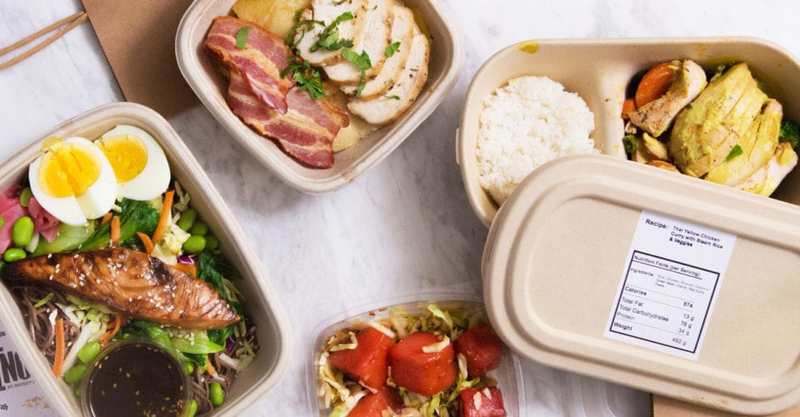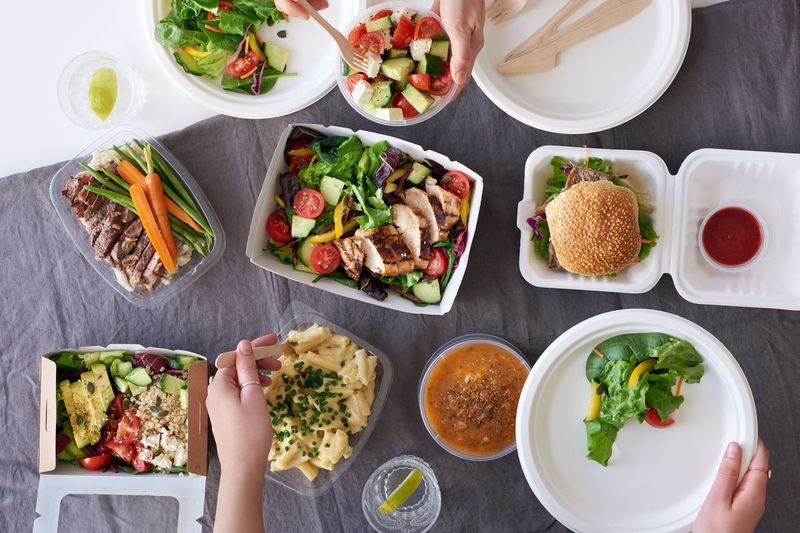Just 10-15 years ago, a restaurant website was more of a sophisticated business card rather than a marketing tool. All you could with it is post contact details and your address, add a menu and, perhaps, prices. Often, restaurant owners didn’t even update the information on their websites for years.
Now, we live in the age of the Internet. If you’re not represented online, you don’t exist. With the boom of food delivery, even premium restaurants started thinking about such a complimentary service as food delivery - not only to gain additional profits but also keep their customers loyal.

More and more restaurants launch their own food delivery apps. And, if you want to stay competitive, you may need one yourself. So, get comfortable - in this article, we’ll cover the key tech trends in this niche and the development costs you should brace yourself for.
Food Delivery Industry and Tech Trends 2019: Key Facts & Figures
The food delivery industry is among the ones with the largest potential. We’re not going to leave this statement unsubstantiated, so here are three key insights of this niche:
- In 2019, the total revenue of the food delivery industry is expected to reach $95 billion;
- By 2023, its total revenue is predicted to amount to $137,6 billion;
- The most developed segment of this niche is restaurant-to-consumer delivery (its market volume is expected to amount to $74 billion).
Impressive, isn’t it? But that’s not all. Apart from the delivery from a restaurant to the customer at their home or office, there are more specific niches appearing at a speed of light, such as pet food apps, food waste apps, etc.

According to the UN estimates, a third of food safe for consumption ends up wasted. In developed countries, this food is thrown away, whereas, in the developing ones, it goes bad before it’s even cooked. This is why some companies launch their solutions in an innovative niche - food waste apps.
Food for All is a particular example of such apps. Its purpose is to allow local stores and restaurants to trade unsold food and dishes. Of course, all items are put on sale with a large discount.
Another example of an app in a particular niche is pet food delivery apps. With their help, pet owners don’t need to waste looking for that specific food their pets love. Instead, they can order it online, fast and easy. Monster Pet Supplies is a good example of such apps.
9 Main Food Delivery App Features in 2019
Now, let’s see what features can spice up your food delivery app and score you more points among the demanding users.
Location services
Your app is very likely to need to locate your users in real time. Usually, this feature is implemented with little effort using an API that grants the app access to the GPS system of the user device. This allows determining the current location of the user accurately and fast.
Social media integration
This is not just a great way to free your users from a long and complicated authorization procedure in a new app. For today’s users, it’s something more - they want to be able to share their food preferences with friends and subscribers on social media in just a tap. If you integrate the sharing feature into your app, you can grant them this opportunity - and they’ll be grateful.
Cryptowallet integration
Although several years ago, it was close to impossible to pay with cryptocurrency for services (and cryptocurrency users weren’t that many), today there is a demand for this feature. This is why we suggest you integrate your food delivery app with payment gateways that accept not only bank cards and eWallets but also cryptocurrencies.
Smart devices integration
Not only phones, tablets and computers are smart devices. More and more people use smartwatches, smart TVs, smart cars or even smart fridges. This is where an opportunity to stand out is hidden. Just think about it - integration with smart fridges is a potential gold mine for food delivery apps.

You can design your app to analyze whether certain food items are missing in the fridge and order them from the nearest supermarket automatically.
Artificial intelligence
One of the most hyped tech trends, AI can find its application in your future app as well. You can offer your users a completely new approach toward placing an order: AI algorithms can analyze their preferences based on the previous data (available on social media or the history of orders) and suggest the most suitable items. Pizza Hut already decided to try this out - its app allows placing an order by tracking the user’s eyes’ motions and reaction for the images of dishes.
Augmented and virtual reality
You may think, ‘How can these two technologies benefit my future users?’ Actually, you can use them to present your menu to users in the most realistic way possible. No more photoshopped 2D images! This will attract not only those who want to see their dishes before placing an order but also the tech geeks who want to try out the latest technological advancements.
Blockchain
This is one more hyped technology. What is it doing on our list? As you may already know, some people are concerned about the origins of the food they eat and want to consume only organic food. This is where blockchain may help - you can implement it for tracking the food origins. As the records on blockchain can’t be modified, your users will be completely sure your food is organic, cruelty-free, and eco-friendly.
Geo-targeted push notifications
You can use such notifications to inform users that the courier is getting close to their location and show the estimated time of arrival. Alternatively, you can notify them about sales and special offers close by. All in all, it will make your customers’ lives easier and their loyalty - stronger.
Drone delivery
This is not a premise for a sci-fi plot anymore (for instance, Amazon is developing drone delivery services under the name Amazon Prime Air). Customers are excited about this for one simple reason - they won’t need to wait for their delivery for an hour while it’s stuck in a traffic jam.
How Much Does Food Delivery App Development Cost?
Well, there is no easy answer to this question - the most accurate (and honest) one would be ‘it depends’.
The first thing the costs depend on is what kind of an app you want - a cross-platform or native one. The first ones are cheaper but may limit your app’s functionality, the second ones mean that you need to multiply the costs by the number of OS you want to run it on - but there are no limits to the functionality you can implement. In the case of native apps, there are separate development teams working on the versions of the app for each OS.
Then, you need to calculate the working hours required for development. In most cases, the budget is formed based not on a fixed price but on the working hours and materials spent. This is why it’s vital to know how many people you need to work on your app. You’ll need at least 5-7 people on your team:
- a project manager;
- 1-2 frontend developers;
- 1-2 backend developers;
- a UX/UI designer;
- 1-2 QA specialists.
Now, let’s estimate how many working hours this team will need to spend to complete each development stage. Frontend usually takes 650 working hours in the case of a mid-complex food delivery app. Designing such an app will take approximately 250 hours. As for backend development, it will require no less than 500 working hours. Testing usually requires around 100 hours.
As a result, the average time needed for developing a food delivery app amounts to 1,500 working hours. (Of course, the final calculations depend heavily on the functionality you want to implement and the way of implementation.) If you multiply this number by an average rate of Ukrainian developers ($40 per hour), your app may cost you $60,000 - such would be an approximate price for strictly basic functionality of an app that excludes any advanced features like drone support or AI and VR.

If your product is innovative and one-of-a-kind, you can opt for a more cost-efficient solution - developing and launching an MVP. In this case, you can expect the costs to be half of what a full-fledged app would cost you. It also allows seeing whether it is going to be demanded among your target groups and adjust its functionality and marketing strategy if needed.
Conclusion
Food delivery is getting more popular due to a number of reasons, both economic and psychological ones. As most of us spend more time working and in commutes, we tend to strive for reducing the time we spend cooking. Apart from that, many want to indulge themselves with an unusual dish - and it’s cheaper to have it delivered at home than go to a restaurant. This is why digitization of the restaurant business is going to blossom in the nearest future, so make sure you hop on that train in time.
If you’d like to get a superior food delivery app, reach out to us! We’d be glad to implement your vision of such an app within the shortest terms following the latest tech trends of the industry and ensure that it will be highly competitive in your niche.







